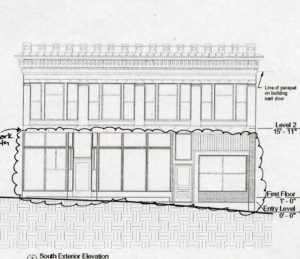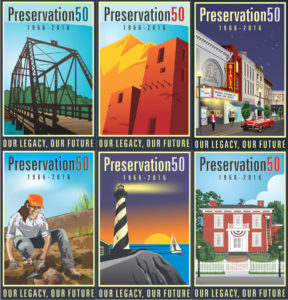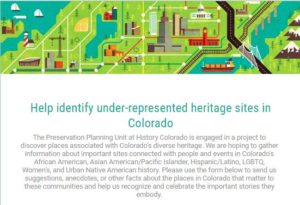Story
Get involved with historic preservation
How can you get involved with historic preservation? You don't need a degree in historic preservation or be an architect to get involved. In fact, much of the work of preservation is often done by passionate volunteers who advocate for the historic resources in their own communities.
In the 1950s and 1960s, as bulldozers lay waste to historic resources in American cities, dedicated local residents banded together to form advocacy groups and pass laws and regulations to protect the historic character of their communities. In time, these efforts led to federal-level interest in preservation, culminating in the National Historic Preservation Act of 1966.
But even with a national commitment to historic preservation, much as it was 50 years ago, preserving places still comes down to you, the citizen-preservationist. Whether you are passionate about preserving an Art-Deco movie theatre in your hometown, or about protecting small farms and their historic landscapes throughout the country, your interest in saving and preserving the buildings and places in your neighborhood and beyond powers the preservation mission. Unlike over 50 years ago, however, there is a built-in framework and support system to help you succeed.
Nominations
Perhaps the most common and important way you can get involved is through the nomination of historic properties to registers of historic places at the federal, state, or local level. While government committees review and approve nominations for resources, nominations often start with the identification of possible places by local citizens with a vested interest in seeing them preserved. Citizens can help identify important places in their own communities, such as through the Heritage Diversity Project, or can contact the Office of Archaeology and Historic Preservation to inquire about the historic significance of an interesting and "old" building.
By identifying places of historic significance, you might be able to help save it, and even participate in the nomination process through writing and research.
Certified Local Governments
The Certified Local Government (CLG) program is run by state and federal partners. CLGs are counties and cities that have historic preservation ordinances and can access special grants and tax credits. These CLGs play a critical role in distributing preservation resources to the local level. As a citizen, you can help by lobbying your local government to become a CLG, or by helping your existing CLG utilize its resources by identifying properties to benefit from this unique program. Learn more about Certified Local Governments here.
Non-profits, volunteering
Outside of CLGs and government programs, there are a number of non-profit organizations dedicated to historic preservation. As non-profits, these groups are often looking for volunteers who can leverage their passion for history by assisting in various ways such as grant writing, surveying, fundraising, research, or advocacy. Colorado Preservation, Inc. is one such non-profit, and has a statewide outlook on preservation. Non-profits are in a unique position to apply for historic preservation grants, such as those offered by the History Colorado State Historical Fund.
Education and Careers
Of course, there are professional opportunities in historic preservation. These jobs exist in both the private and public sector in the form of specialized contractors, architects, urban planners, grant specialists, historians, archaeologists, communications specialists, and many others. Several programs are offered throughout the state, including two at CU Denver through both the history department and the department of architecture and urban planning.
Historic preservation could not function without the support and dedication of passionate individuals. In fact, the field would not even exist if not for those who volunteered their time and banded together to protect the places that were important to them. If you are interested in preservation, whether you are a professional or someone just passionate about your community, you can invest your time, knowledge, and interest to keep the field of historic preservation alive for generations to come.



